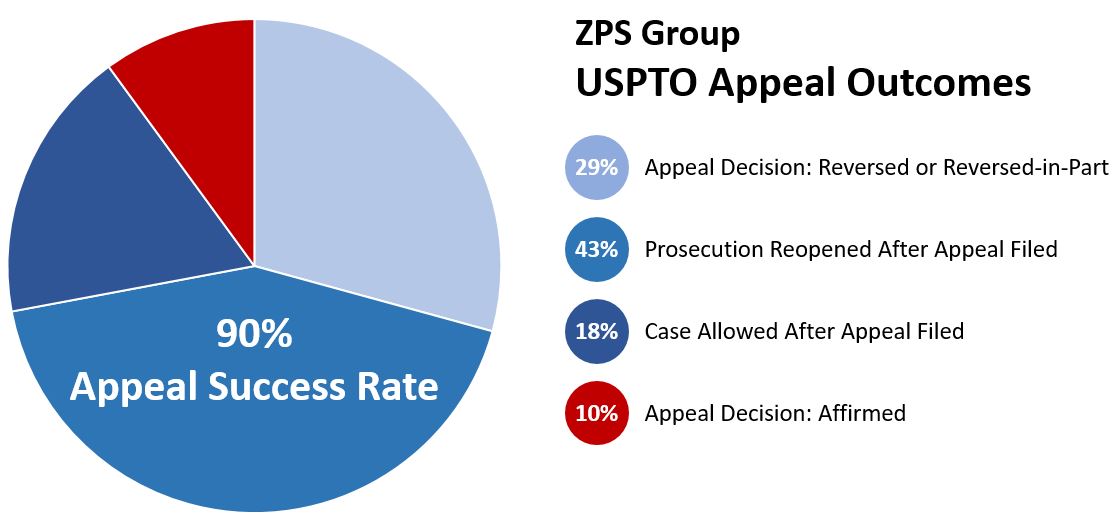Appeal Practice
As illustrated in the chart above, the ZPS Group has been very successful in utilizing the USPTO appeal process during the examination of a patent application. The USPTO appeal process may be initiated to cause a review of the application before a panel of administrative patent justices if an examiner persists in the rejection of any of the claims in an application. The process may be used to overturn incorrect or unreasonable assertions set forth by examiners.
A few examples of successful appeal decisions are summarized below:
- USP 9,299,661: In this case, the Examiner rejected all the Applicant’s claims as anticipated under 35 USC 102 or obvious under 35 USC 103 and considered an antedating affidavit filed under 37 CFR 1.131(a) as ineffective to overcome a prior art reference. After filing an Appeal Brief with arguments against both the Examiner’s prior art rejections and imposition of unnecessary requirements for an antedating affidavit, the Examiner withdrew all rejections and allowed the case.
- USP 7,421,650: In this case, the Examiner rejected claims as being obvious over a combination of prior art references under 35 USC 103(a). The Examiner was reversed because the Examiner failed to allege that the addition of references to a primary reference cured deficiencies of the primary reference. Accordingly, the Examiner had failed to establish a prima facie case of obviousness.
- USP 7,288,740: The Examiner rejected all claims as being obvious over a combination of prior art references under 35 USC 103(a). The rejections were reversed because it was demonstrated that the Examiner had relied upon impermissible hindsight in piecing together the prior art to arrive at Applicant’s invention.
- USP 7,581,885: BPAI reversed the Examiner’s 35 USC 102 rejection based on our argument that the Examiner was using a term definition that was not consistent with that defined in the Specification. The Examiner’s rejections under 35 USC 103(a) were also reversed based on our argument that the Examiner used had impermissible hindsight and mere conclusory statements to support the obviousness rejection.
* The Appeal Success Rate represents the percentage of prior cases in which, after initiating the USPTO appeal process, prosecution was reopened, the case was allowed, or the BPAI reversed the Examiner’s rejection in whole or in part. The prior results referred to in this website do not guarantee or suggest a similar outcome in any future case.
** Results current as of November 2019 and include 253 cases.

